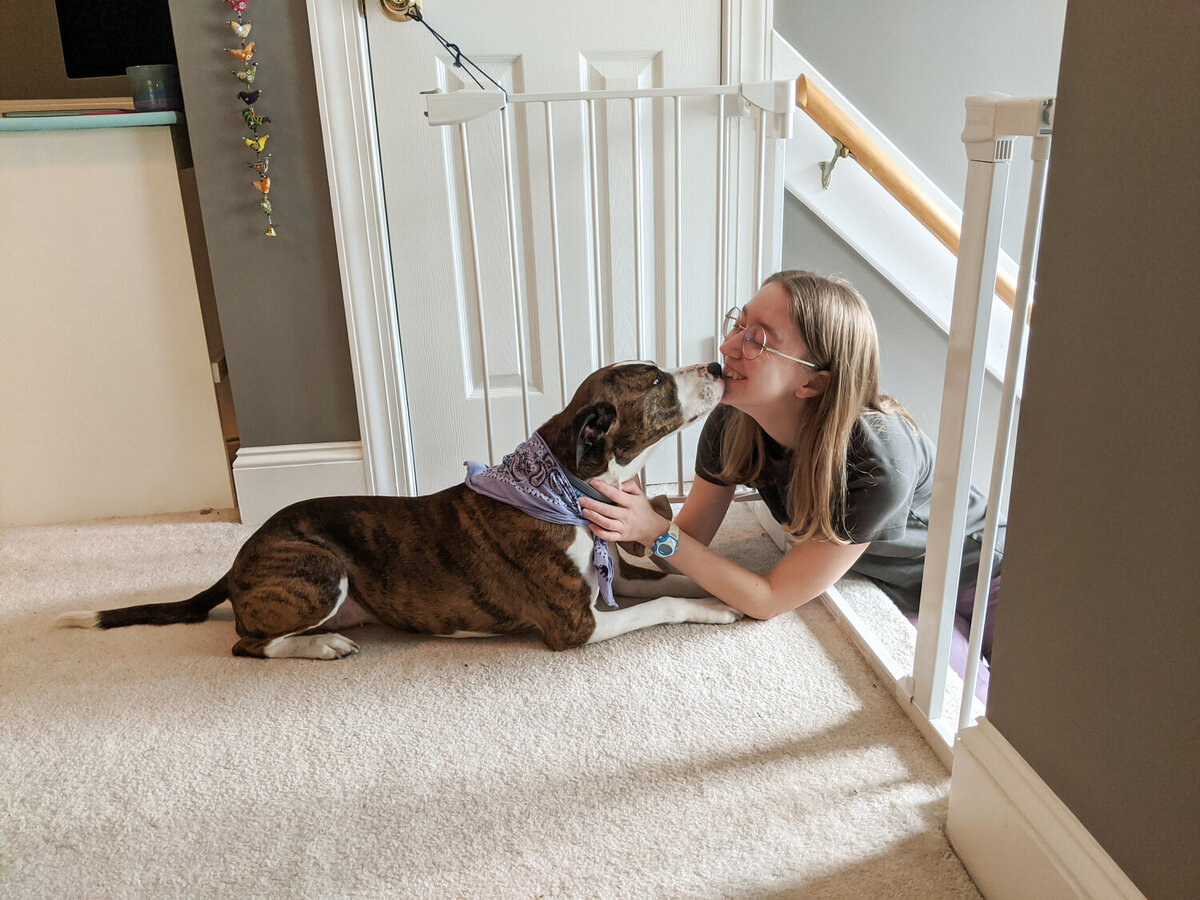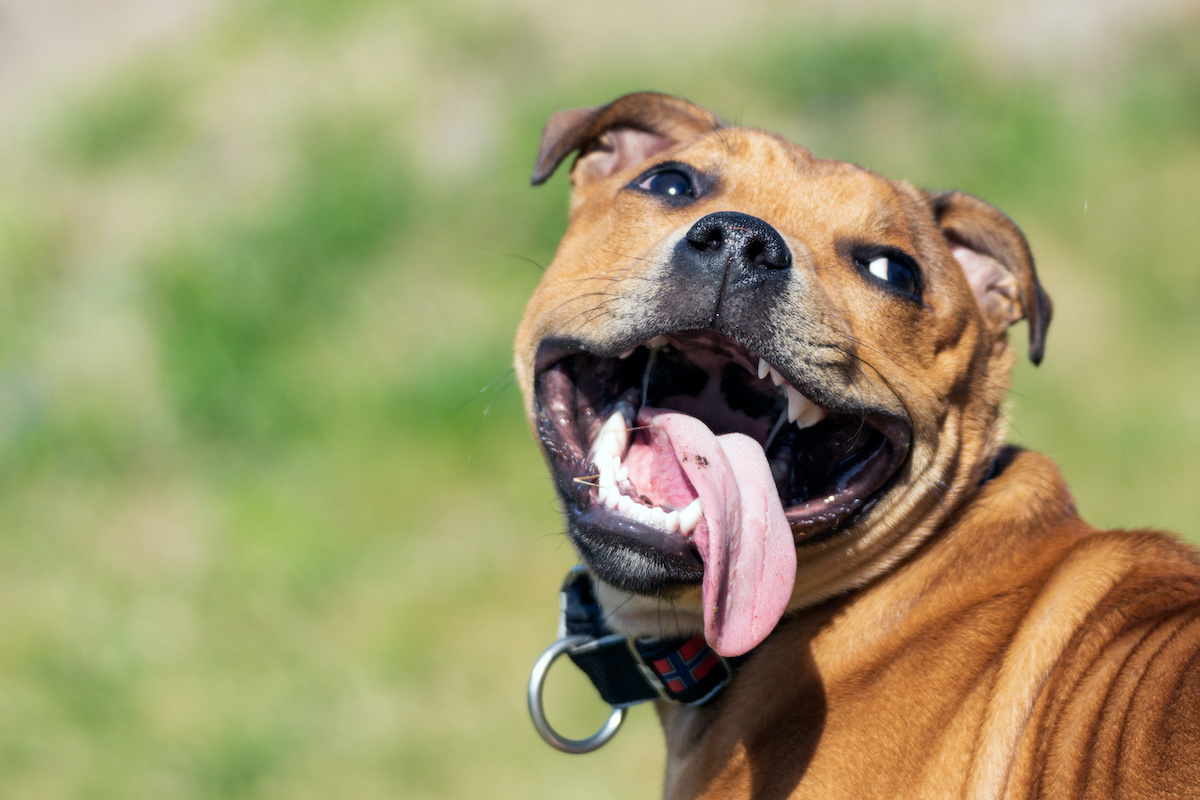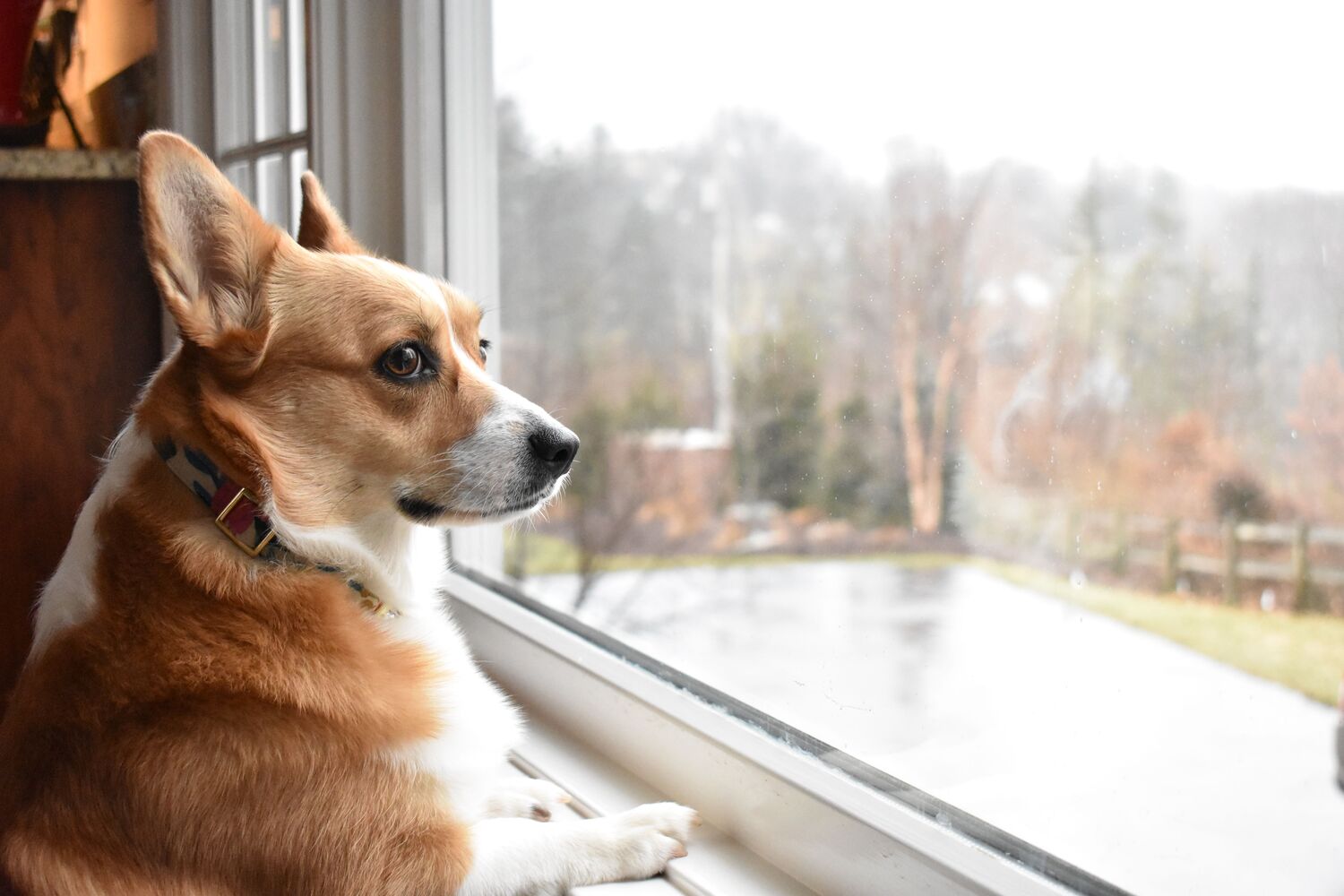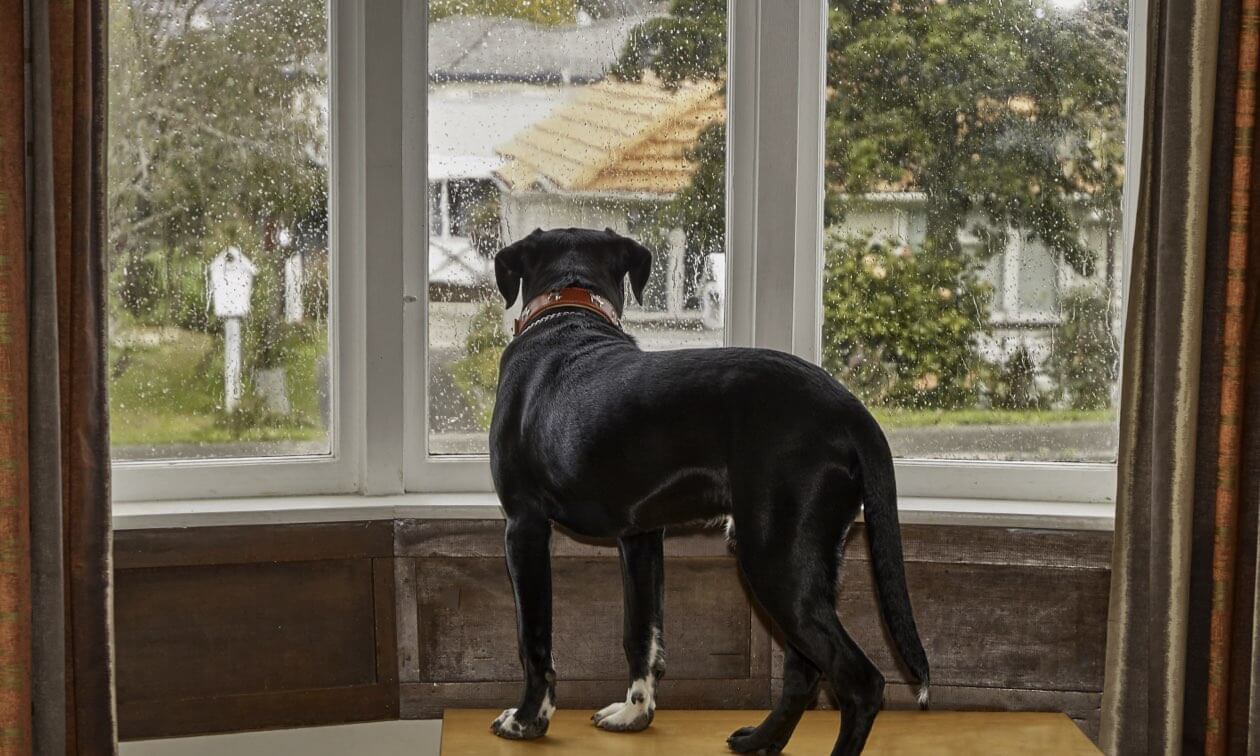Home>Health & Wellness>Behavior & Cognitive Care>How To Stop Separation Anxiety Barking In Dogs


Behavior & Cognitive Care
How To Stop Separation Anxiety Barking In Dogs
Published: January 30, 2024
Learn effective strategies to stop separation anxiety barking in dogs with our expert behavior and cognitive care tips. Say goodbye to excessive barking today!
(Many of the links in this article redirect to a specific reviewed product. Your purchase of these products through affiliate links helps to generate commission for Pawsomeoldies.com, at no extra cost. Learn more)
Table of Contents
- Understanding Separation Anxiety in Dogs
- Identifying the Triggers for Separation Anxiety Barking
- Creating a Safe and Comfortable Environment for Your Dog
- Gradual Desensitization and Counterconditioning Techniques
- Providing Mental and Physical Stimulation for Your Dog
- Seeking Professional Help and Support
Understanding Separation Anxiety in Dogs
Separation anxiety is a common behavioral issue in dogs, characterized by distress and anxious behaviors when they are separated from their owners or left alone. This condition can lead to excessive barking, destructive behavior, and other signs of distress. Understanding the underlying causes and manifestations of separation anxiety is crucial in addressing this issue effectively.
Dogs are social animals that form strong emotional bonds with their human companions. When they are suddenly separated from their owners, they may experience intense feelings of fear and insecurity. This can trigger a range of distressing behaviors, including incessant barking, whining, pacing, and destructive chewing. It's important to recognize that these behaviors are not indicative of disobedience or spite; rather, they are manifestations of the dog's emotional distress.
Separation anxiety can stem from various factors, including past traumatic experiences, lack of socialization, or abrupt changes in routine. Additionally, certain breeds, such as the Labrador Retriever and German Shepherd, may be more prone to developing separation anxiety due to their innate predisposition for forming strong attachments with their human family members.
It's essential for dog owners to recognize the signs of separation anxiety, which may include excessive barking specifically targeted at the door or window through which the owner exits, destructive behavior near exit points, and signs of distress leading up to the owner's departure. Understanding these signs can help owners differentiate between typical behavioral issues and separation anxiety.
By gaining a deeper understanding of the emotional and psychological impact of separation anxiety on dogs, owners can approach the issue with empathy and patience. This understanding forms the foundation for implementing effective strategies to alleviate the distress experienced by dogs when left alone.
Understanding the root causes and emotional implications of separation anxiety in dogs is the first step toward implementing targeted interventions to help alleviate this distressing condition. By acknowledging the emotional vulnerability of our canine companions, we can cultivate a more compassionate and supportive approach to addressing their separation anxiety.
Identifying the Triggers for Separation Anxiety Barking
Separation anxiety barking is a distressing behavior exhibited by dogs when they are left alone or separated from their owners. Identifying the triggers that prompt this behavior is crucial in developing effective strategies to address and alleviate the distress experienced by our canine companions.
One of the primary triggers for separation anxiety barking is the impending departure of the owner. Dogs often display signs of distress, such as heightened alertness, pacing, and vocalization, as they anticipate their owner's departure. This anticipation can lead to escalating anxiety, culminating in excessive barking as a manifestation of their emotional distress.
Furthermore, the act of departure itself, including the sound of keys jingling, putting on shoes, or grabbing a coat, can serve as a potent trigger for separation anxiety barking. These cues signal to the dog that their owner is about to leave, intensifying their anxiety and prompting vocalization as a means of expressing their distress.
The physical act of separation, such as the closing of the front door, can also trigger intense anxiety and barking in dogs with separation anxiety. The sudden isolation from their human companion can evoke a profound sense of fear and insecurity, prompting vocalization as a desperate attempt to seek reassurance and proximity.
Additionally, environmental cues, such as seeing the owner through a window or hearing their footsteps moving away, can trigger separation anxiety barking. Dogs with separation anxiety often exhibit hyper-vigilance, closely monitoring their owner's movements and displaying escalating distress as they perceive the impending separation.
It's important for dog owners to keenly observe and identify these triggers for separation anxiety barking. By recognizing the specific cues and behaviors that precede the onset of distress, owners can gain valuable insights into their dog's emotional state and tailor interventions to address these triggers effectively.
Understanding the triggers for separation anxiety barking empowers dog owners to implement targeted strategies aimed at alleviating their pet's distress. By identifying and addressing these triggers, owners can take proactive steps to create a more secure and comforting environment for their dogs, ultimately fostering a sense of emotional well-being and security in their absence.
Creating a Safe and Comfortable Environment for Your Dog
Creating a safe and comfortable environment is paramount in addressing separation anxiety in dogs. By establishing a secure and reassuring setting, dog owners can significantly alleviate their pet's distress and promote a sense of calm and well-being in their absence.
-
Designated Comfort Zone: Designate a specific area within the home as your dog's comfort zone. This area should be equipped with familiar bedding, toys, and comforting items that carry the owner's scent. This designated space serves as a safe haven where the dog can retreat to when feeling anxious or distressed.
-
Calming Aids: Utilize calming aids such as pheromone diffusers or calming sprays to create a soothing atmosphere within the home. These aids can help reduce stress and anxiety, providing a comforting environment for the dog.
-
Gradual Alone Time: Gradually accustom your dog to spending time alone by implementing short departures and gradually increasing the duration over time. This gradual desensitization approach can help the dog acclimate to being alone and reduce anxiety associated with separations.
-
Background Noise: Playing soft, soothing music or leaving the television on at a low volume can help mask external noises and create a calming ambiance. This can mitigate the dog's sensitivity to external sounds that may trigger anxiety-related behaviors.
-
Interactive Toys: Provide interactive toys and puzzles that offer mental stimulation and engagement for your dog. These toys can help alleviate boredom and anxiety, redirecting their focus from the owner's absence to enjoyable activities.
-
Consistent Routine: Establish a consistent daily routine for your dog, including regular feeding times, exercise, and play sessions. Predictability and structure can instill a sense of security and stability, reducing anxiety associated with abrupt changes in the daily schedule.
-
Positive Associations: Associate the owner's departure with positive experiences by offering special treats or engaging in a fun activity before leaving. This can help create a positive association with the owner's departure, mitigating the dog's distress.
-
Comforting Scents: Introduce comforting scents, such as lavender or chamomile, in the dog's environment. These scents are known for their calming properties and can help promote relaxation in dogs.
By implementing these strategies and creating a safe and comfortable environment, dog owners can significantly mitigate separation anxiety in their pets. This proactive approach fosters a sense of security and well-being, ultimately contributing to a happier and more relaxed canine companion.
Gradual Desensitization and Counterconditioning Techniques
Gradual desensitization and counterconditioning are fundamental techniques used to address separation anxiety in dogs. These methods focus on reshaping the dog's emotional response to being left alone, ultimately reducing their anxiety and distress.
Gradual Desensitization:
Gradual desensitization involves systematically exposing the dog to the triggers of their anxiety in a controlled and gradual manner. This process aims to acclimate the dog to being alone and desensitize them to the distressing stimuli that typically prompt anxious behaviors, such as barking and destructive actions.
The key to gradual desensitization is to start with minimal separation periods that do not trigger anxiety in the dog. This could involve brief departures, such as stepping outside the door for a few seconds, and gradually increasing the duration over time. By incrementally extending the periods of separation, the dog learns to tolerate being alone without experiencing overwhelming distress.
Counterconditioning:
Counterconditioning complements gradual desensitization by replacing the dog's negative emotional response to being alone with a positive association. This involves pairing the experience of being alone with something enjoyable or rewarding for the dog, thereby altering their emotional perception of separation.
For instance, the act of the owner's departure, which typically triggers anxiety, can be paired with a special treat or engaging activity that the dog loves. Over time, the dog begins to associate the owner's departure with positive experiences, gradually diminishing their anxiety and distress.
Implementing the Techniques:
To effectively implement these techniques, it's crucial for dog owners to proceed at a pace that aligns with their pet's comfort level. Rushing the process can exacerbate the dog's anxiety, while a gradual and patient approach can yield positive results.
Consistency and patience are paramount, as desensitization and counterconditioning are gradual processes that require time and dedication. By consistently exposing the dog to brief periods of separation and pairing these experiences with positive stimuli, owners can effectively reshape their pet's emotional response to being alone.
Incorporating gradual desensitization and counterconditioning techniques into a comprehensive separation anxiety management plan can yield significant improvements in the dog's behavior and emotional well-being. These methods offer a compassionate and proactive approach to addressing separation anxiety, ultimately fostering a sense of security and calm for our beloved canine companions.
Providing Mental and Physical Stimulation for Your Dog
Ensuring adequate mental and physical stimulation is essential in addressing separation anxiety in dogs. By engaging their cognitive abilities and fulfilling their exercise needs, owners can significantly reduce anxiety-related behaviors and promote overall well-being in their pets.
Mental Stimulation:
Mental stimulation is crucial for keeping dogs intellectually engaged and preventing boredom, which can exacerbate separation anxiety. Incorporating interactive activities and enrichment exercises can divert the dog's focus from their owner's absence and provide a constructive outlet for their energy and emotions. Puzzle toys, treat-dispensing devices, and interactive games not only offer mental stimulation but also encourage problem-solving skills, fostering a sense of accomplishment and fulfillment in the dog.
Read more: How To Stop Dog Anxiety Peeing
Enriching Activities:
Engaging in enriching activities, such as scent work or hide-and-seek games, can captivate the dog's attention and channel their energy in a positive direction. These activities tap into the dog's natural instincts and provide a productive and enjoyable outlet for their mental and sensory faculties. Additionally, introducing novel experiences, such as exploring new walking routes or visiting dog-friendly parks, can stimulate the dog's curiosity and enrich their mental experiences, reducing anxiety and restlessness.
Physical Exercise:
Regular physical exercise is vital for promoting a balanced and contented state in dogs. Physical activities, including brisk walks, interactive play sessions, and agility exercises, not only expend the dog's physical energy but also release endorphins, which contribute to a sense of relaxation and well-being. Adequate exercise can alleviate pent-up anxiety and restlessness, making the dog more receptive to periods of separation from their owner.
Interactive Playtime:
Engaging in interactive playtime with the dog strengthens the bond between the owner and their pet while providing a constructive outlet for their energy. Interactive games, such as fetch, tug-of-war, and hide-and-seek, promote physical activity and mental engagement, fostering a sense of fulfillment and contentment in the dog. These activities also serve as a positive distraction, redirecting the dog's focus from their owner's absence to enjoyable interactions with their human companion.
By prioritizing mental and physical stimulation, dog owners can effectively mitigate separation anxiety and promote a balanced and enriched lifestyle for their pets. These proactive measures not only address the immediate symptoms of separation anxiety but also contribute to the overall well-being and happiness of the dog, fostering a harmonious and fulfilling relationship between the owner and their beloved canine companion.
Seeking Professional Help and Support
Seeking professional assistance is a crucial step in addressing separation anxiety in dogs, especially in cases where the condition persists despite implementing various management strategies. Professional support offers tailored interventions and expert guidance to effectively manage and alleviate the distress experienced by dogs with separation anxiety.
Veterinary Consultation:
Initiating the journey towards addressing separation anxiety often begins with a comprehensive veterinary consultation. A veterinarian can conduct a thorough assessment to rule out any underlying medical conditions that may contribute to the dog's anxiety. Additionally, they can offer insights into the behavioral aspects of separation anxiety and recommend appropriate interventions, including behavior modification techniques and, if necessary, pharmacological options.
Certified Canine Behaviorist or Trainer:
Engaging the expertise of a certified canine behaviorist or trainer can provide invaluable support in developing a customized behavior modification plan tailored to the specific needs of the dog. These professionals possess a deep understanding of canine behavior and can offer targeted interventions to address separation anxiety. Through structured desensitization protocols, counterconditioning techniques, and personalized training strategies, they can help reshape the dog's emotional response to being alone and mitigate anxiety-related behaviors.
Behavioral Modification Programs:
Participation in behavioral modification programs, either in a group setting or through individual sessions, can offer dogs and their owners a supportive environment to address separation anxiety. These programs often incorporate systematic desensitization, counterconditioning, and positive reinforcement techniques under the guidance of experienced professionals. By participating in these programs, dogs can gradually acclimate to being alone and learn coping mechanisms, while owners receive guidance on implementing effective strategies at home.
Collaborative Care Approach:
In complex cases of separation anxiety, a collaborative care approach involving the veterinarian, behaviorist, and the dog's owner can yield optimal outcomes. This approach fosters open communication and coordination among the involved parties, ensuring a cohesive and comprehensive treatment plan. By aligning medical considerations with behavioral interventions and ongoing support from the owner, this collaborative approach addresses the multifaceted nature of separation anxiety and maximizes the potential for successful outcomes.
Ongoing Support and Follow-Up:
Professional help extends beyond the initial consultation, with ongoing support and follow-up playing a pivotal role in the management of separation anxiety. Regular follow-up appointments with the veterinarian or behaviorist allow for the assessment of progress and the adjustment of interventions as needed. Additionally, these professionals can provide guidance on long-term management strategies and offer support to owners as they navigate the journey of addressing their dog's separation anxiety.
By seeking professional help and support, dog owners can access specialized expertise and tailored interventions to effectively address separation anxiety in their pets. This collaborative approach not only enhances the well-being of the dog but also empowers owners with the knowledge and resources to support their canine companions through this challenging behavioral issue.











